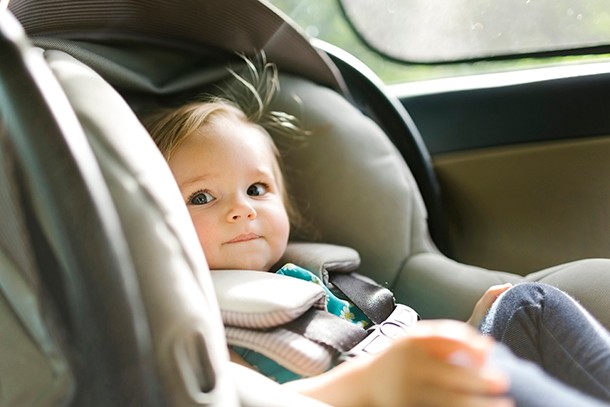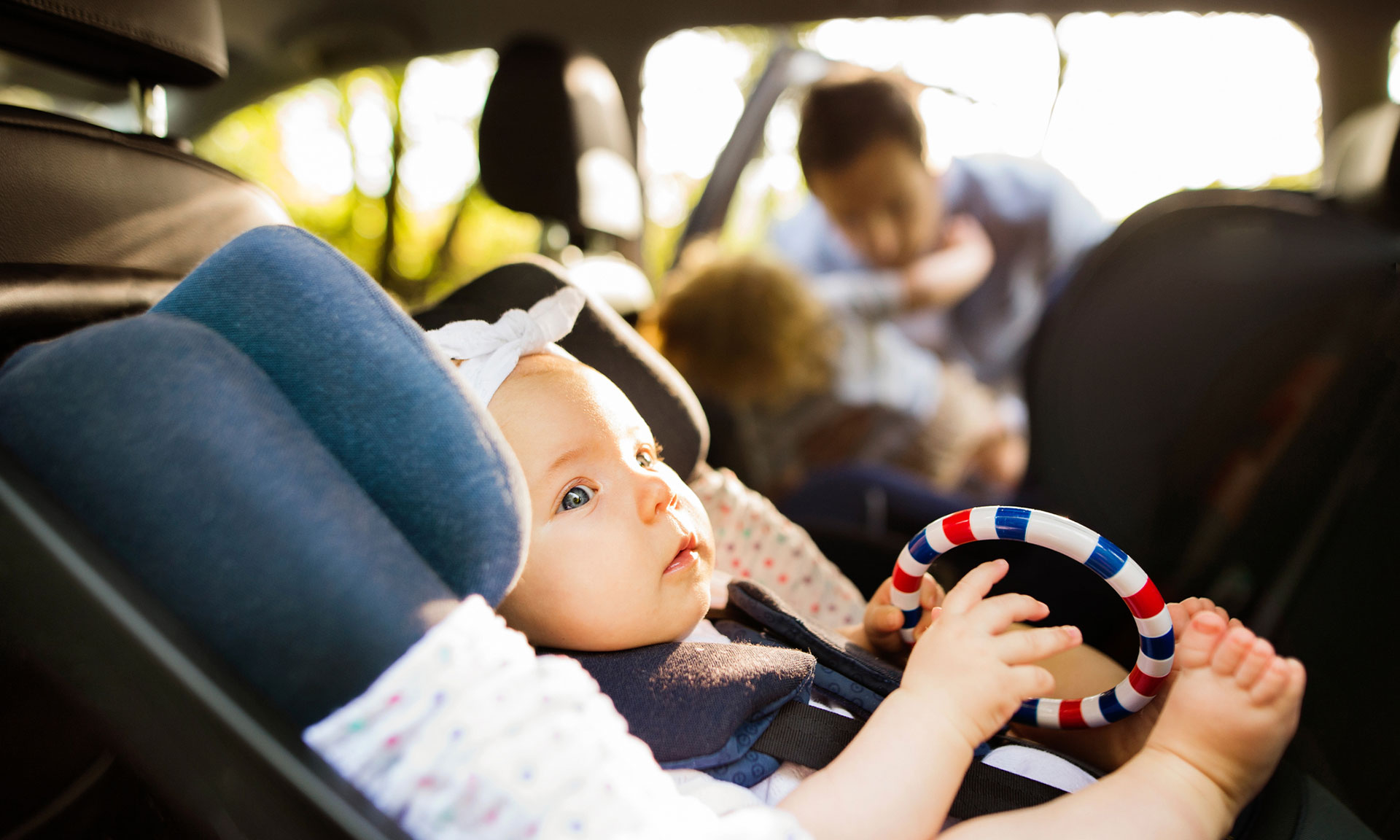There are plenty of car seats to choose from, all intended to make child transportation both easier and safer. Hence, as the child grows, you need to upgrade their seat according to age, weight, and height.
So, when is my baby too big for infant car seat? – This is one of the most common questions asked by parents. Luckily, you arrived in the right place. This article discusses when it is the right time to upgrade your child’s car seat.

When Is My Baby Too Big for Infant Car Seat?
Infant car seats are intended for children who weigh between 25 to 35 pounds. That said, if your baby is heavier, you will need to switch their car seat to a bigger one. Such infant car seats are meant to be comfortable and convenient and are installed rear-facing in the car. Parents who use this type of seat generally transition to a larger one when their child is 9 months to 2 years of age.
When to Upgrade Infant Car Seat?
When you are traveling in the car with your little one, it is necessary to put the child in a suitable car seat. The right seat will not only make your child comfortable but will also keep them safe during the car ride.
However, when the top of the child’s head is less than an inch from the top of the seat when buckled, then it means that it is time for an upgrade. In such a case, you can upgrade the seat to a convertible car seat or get a booster seat. The booster seats are intended for infants that have outgrown their seats but are not grown enough to ride in the car without one.
Aside from this, a car seat should last until the child reaches the weight and height limit of the seat.
Most infant car seats are labeled Group 0+ and suitable for children from 22-35 pounds. That said, some seats don’t have a weight limit, so your child might outgrow it before it reaches the limit. The average age before making the switch is up to 2 years, but as every baby grows at a different rate, it depends on how heavy and tiny the little one has gotten.
Making the switch
To be sure that your child is riding safely in your car, what I suggest is familiarizing yourself with the seat’s height and weight requirements.
That said, if the child is over the weight limit but under the height limit and vice versa, it is no longer safe to use that seat for your child.
Hence, many pediatrics recommend switching to a rear-facing convertible seat before your child’s head reaches one inch below the top of the seat.
Related: How to Fly With a Car Seat

Main differences between an infant and a convertible car seat
Now that you have an answer on when is my baby too big for infant car seat, you are probably wondering what the difference between these two seats is. Let’s get into the details.
Infant car seats
Infant car seats are only used rear-facing and are the most suitable option for parents with a newborn. Generally, such sturdy seats can be attached to a stroller, making it very convenient.
Moreover, they can be attached to a base latched into the car and are compatible with the car seats, allowing you to affix the seat to a stroller and take it in or out of the car without waking up the baby and interrupting their sleep.
However, if your baby doesn’t seem comfortable in the seat, it is recommended to adjust the angle and go from a steep to a more reclined position.
Convertible car seats
In contrast to the infant car seats, which must be rear-facing, convertible car seats can be rear-facing for the first years and then turned to be forward-facing.
In addition, they are installed in the vehicle on their own without the base, and they are much larger than infant car seats.
They also come with minimum and maximum guidelines regarding a child’s weight and height so they can travel safely in the car. These types of seats are designed for both infants and toddlers.
Tips on Using Infant Car Seats
Different regulations make it challenging for so many parents when it comes to upgrading the car seat for their little one. On top of that, there are also many misconceptions that can confuse you.
Therefore, I suggest reading these tips to get more informed about when the baby is too big for an infant car seat.
Legs touching the vehicle seat
Many people believe their child has outgrown the seat if the legs are touching or kicking the seat. However, the position of the infant’s legs is not an indicator of overgrowing the seat nor of comfort and safety.
The child resists being put in the car seat
If the child resists being placed in the car seat, it doesn’t mean that the child has outgrown the seat. Children of such an age range are learning new physical abilities, so they may resist sitting in the car seat as they don’t like being restrained. However, the child must feel comfortable in the seat.
Adjusting the seat as needed
As your child grows, you will need to adjust the seat accordingly, including adjusting the harness and removing the cushion and the head hugger.
Time the baby should spend in a car seat
Keep in mind that babies should spend a maximum of 90 minutes in a car seat at a time, even though travel systems are meant to be comfortable and convenient.
Proper car seat installation
When shopping for an infant car seat, check the seat’s expiration date before making a purchase. Equally important is to ensure the infant car seat is properly installed before usage.
Read more: How Long a Baby Can Sleep in a Bassinet?
Conclusion
Using an infant car seat is necessary to keep the child safe while you are on the road. Such seats provide a lot of advantages, including protection for the baby in case of an accident, providing head and neck support as they grow, making the baby comfortable during a car ride and feel more secure, and encouraging sleep due to rocking motion.
But when is my baby too big for infant car seat? If you’ve asked yourself this question, you need to ensure that the car seat is suitable for your child as well as safe based on age, weight, and height and upgrade the seat on time if your little one has outgrown it.








